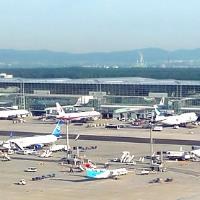(BRUSSELS) – The European Commission pressed ahead with implementation of its ‘Aviation Strategy for Europe’ Thursday with a series of measures in support of open and connected aviation markets in the EU.
The initiatives aim to safeguard competition and connectivity in aviation, facilitate investments in European airlines and enhance the efficiency and connectivity of European skies. This should lead to a more competitive aviation sector, with open and connected aviation markets offering better value flights to a greater choice of travel destinations worldwide.
“The success of European aviation is based on open and connected aviation markets,” said Transport Commissioner Violeta Bulc. ” Our actions should deliver concrete benefits for passengers, workers and the aviation industry.”
European aviation represents 26% of the world market, contributing EUR 510 billion annually to Europe’s Gross Domestic Product, and supporting 9.3 million jobs in Europe. In 2015, over 1.45 billion passengers departed or arrived at EU airports.
The ‘Open and Connected Aviation’ package includes four initiatives, which deliver on two core priorities of the Aviation Strategy for Europe adopted by the Commission in 2015:
1. Maintain leadership in international aviation
European air connectivity in international air transport is equally dependent on foreign and EU airlines. When flying to or from the EU, all air carriers are granted the same rights. This may not always be the case for EU airlines when operating outside of the EU. In the absence of international rules, EU airlines may be subject to practices affecting competition. In the long run this could also affect the EU’s connectivity, impacting the Union’s competitiveness and limiting choices for travellers. The Commission is therefore proposing a new tool to ensure that EU airlines can compete on the basis of equal opportunities, and connectivity can be safeguarded. It will allow the EU to take appropriate action, should certain practices put the EU’s connectivity at risk.
In order to grow and thrive in a competitive environment, EU airlines also need access to investment, including foreign investment. Today, the Commission is adopting guidelines on the ownership and control of EU airlines. By bringing more clarity and certainty to investors and airlines alike, these guidelines will facilitate investments and help create new jobs.
2. Tackle limits to growth in European skies
The main challenge for the growth of European aviation is to address the capacity, efficiency and connectivity constraints.Connectivity has a direct impact on economic activity and on people’s mobility: more flights mean more growth and more jobs. In certain European regions however, air travel remains a challenge, which is why Member States and local authorities can introduce Public Service Obligations to guarantee sufficient connections to the rest of their territory and of Europe. Today, the Commission is adopting guidelines on the existing rules regarding Public Service Obligations in aviation. They will make it easier for national authorities to address connectivity gaps, better serve the needs of local communities and contribute to their wealth.
Another priority is to enhance the efficiency of European skies by reducing fragmentation, which is responsible for EUR 3 billion of extra costs a year and 50 million tonnes of CO2, and by minimising air traffic disruption. Today the Commission is therefore inviting Member States and aviation stakeholders to consider a number of good practices to ensure air service continuity in the event of industrial action. These practices do not question the fundamental right to strike, but rather aim to improve service continuity and minimise disruption to the European network for airlines and passengers. Between 2005 and 2016, more than 243,000 flights were cancelled due to industrial action in Air Traffic Management, affecting around 27 million passengers. The good practices put forward by the Commission draw on a number of existing practices across the EU Member States.
Today’s initiatives are necessary to maintain and strengthen an open and connected aviation market that directly benefits EU citizens, workers and businesses. They consist of:
- A legislative proposal for a Regulation on safeguarding competition in air transport;
- Interpretative guidelines on ownership and control of EU airlines.
- Interpretative guidelines on public services obligations;
- Practices facilitating continuity of air traffic management.
They come together with a Communication from the Commission that introduces the initiatives and puts them in their wider context.
Air travel has substantially increased since the creation of the EU’s Single Aviation Market 25 years ago. The number of daily flights has increased from less than 10,000 in 1992 to around 23,000 in 2016. In addition, passengers now have access to more destinations. Today there are around 7,400 routes compared to less than 2,700 in 1992.



